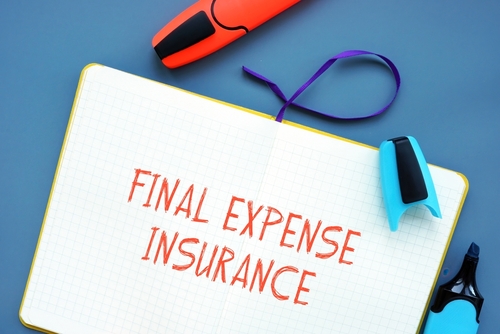Our Pacific Prime Statements
Table of ContentsExamine This Report about Pacific PrimeHow Pacific Prime can Save You Time, Stress, and Money.A Biased View of Pacific PrimePacific Prime - Questions
In the majority of states, the insurance provider is called for to send you a copy of the modifications to your plan. It is very important that you read Endorsements or Riders so you understand how your plan has actually changed and if the policy is still sufficient to meet your needs. To obtain a duplicate of your insurance plan, please call your insurance policy agent or company.
The Institute of Medicine (IOM) Board on the Effects of Uninsurance launches an extensive examination of proof that addresses the significance of medical insurance protection with the magazine of this report. Protection Matters is the very first in a series of six records that will certainly be issued over the next two years recording the reality and effects of having actually an estimated 40 million people in the USA without health and wellness insurance coverage.

An Unbiased View of Pacific Prime
The objective of this collection of research studies is to refocus policy attention on a longstanding problem. Complying with the lengthiest economic development in American history, in 1999, an approximated one out of every six Americans32 million grownups under the age of 65 and greater than 10 million childrenremains without insurance (Mills, 2000).

10 percent of the populace make up 70 percent of health and wellness care expenditures, a relationship that has continued to be continuous over the previous 3 years (Berk and Monheit, 2001) - maternity insurance for expats. Therefore medical insurance remains to offer the function of spreading risk also as it significantly funds regular treatment. From the perspective of wellness care providers, insurance coverage lugged by their people aids safeguard an income stream, and neighborhoods gain from economically practical and secure wellness care practitioners and organizations
Federal government gives health insurance to populaces whom the exclusive market may not offer properly, such as handicapped and senior citizens, and populations whose access to healthcare is socially valued, such as kids and expectant ladies. The utmost ends of health and wellness insurance policy coverage for the individual and areas, consisting of workplace areas of employees and employers, are boosted health results and quality of life.
Everything about Pacific Prime
Employees rank wellness insurance policy initially without a doubt in significance amongst all the advantages provided in the workplace their website (Salisbury, 2001). Although there have actually been substantial investments of individual and public funds to offer health insurance coverage, many individuals still have no insurance coverage. Despite extensive reporting of study findings and health treatment research results, the basic public stays baffled and mistaken about Americans without medical insurance and the effects of lacking insurance coverage.

Without doubt, the intricacy of American healthcare funding mechanisms and the riches of sources of information contribute to the general public's complication and uncertainty about medical insurance stats and their interpretation. This record and those that will certainly adhere to aim to boil down and provide in easily easy to understand terms the comprehensive research that bears upon questions of medical insurance protection and its importance.
Fifty-seven percent of Americans surveyed in 1999 thought that those without medical insurance are "able to get the care they need from medical professionals and medical facilities" (Blendon et al., 1999, p. 207). In 1993, when nationwide interest was concentrated on the troubles of the without insurance and on pending healthcare regulation, simply 43 percent of those surveyed held this idea (Blendon et al., 1999).

They likewise obtain fewer preventative solutions and are much less likely to have regular care for persistent problems such as hypertension and diabetes mellitus. Persistent conditions can bring about pricey and disabling complications if they are not well taken care of (Lurie et al., 1984; Lurie et al., 1986; Ayanian et al., 2000). One national survey asked even more than 3,400 grownups concerning 15 very serious or morbid conditions.
Pacific Prime for Beginners
Additional evidence exists later in this chapter in the discussion of insurance policy and access to healthcare. https://www.huntingnet.com/forum/members/pacificpr1me.html. People without medical insurance are young and healthy and balanced and pick to do without coverage. Nearly half (43 percent) of those surveyed in 2000 believed that individuals without medical insurance are most likely to have illness than people with insurance policy
Voters and plan makers in focus group discussions define those without insurance as young individuals who have the opportunity to be covered and feel they do not need it (Concierge Novelli, 2001). Compared to those with a minimum of some private protection, the uninsured are much less most likely to report being in excellent or extremely good health (Company for Health Care Study and Quality, 2001).
RESOURCE: Facility for Expense and Financing Research Studies, Agency for Medical Care Research Study and Quality, based on MEPS data. Young person between 19 and 34 are much more most likely to lack wellness insurance than any kind of various other age team. This is chiefly due to the fact that they are less commonly qualified for employment-based insurance coverage because of the nature of their work or their short period in it.
The perception that individuals without insurance have better-than-average health complies with from puzzling the fairly young age profile of the uninsured with the better health, on standard, of more youthful persons. This covers the web link between wellness condition and health insurance coverage. For those without access to workplace medical insurance, inadequate health and wellness is a prospective barrier to acquiring nongroup coverage since such insurance coverage might be highly valued, exclude preexisting conditions, or be just inaccessible.